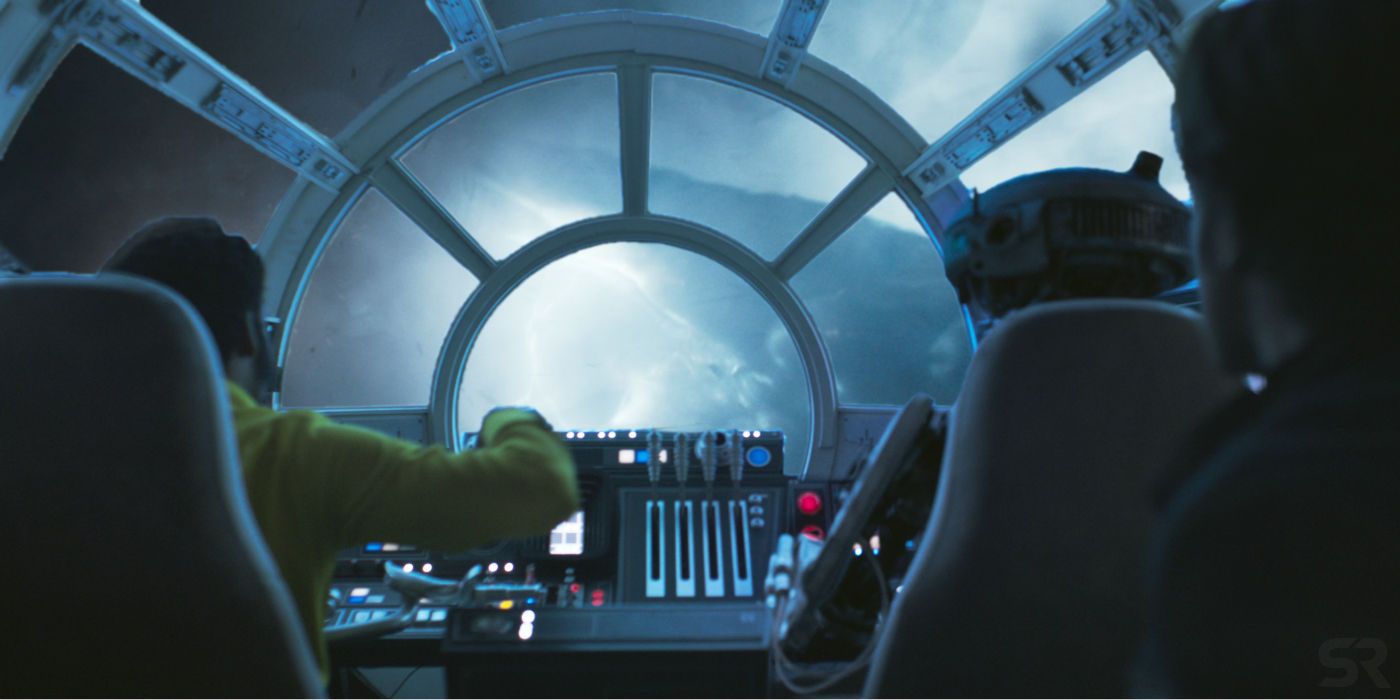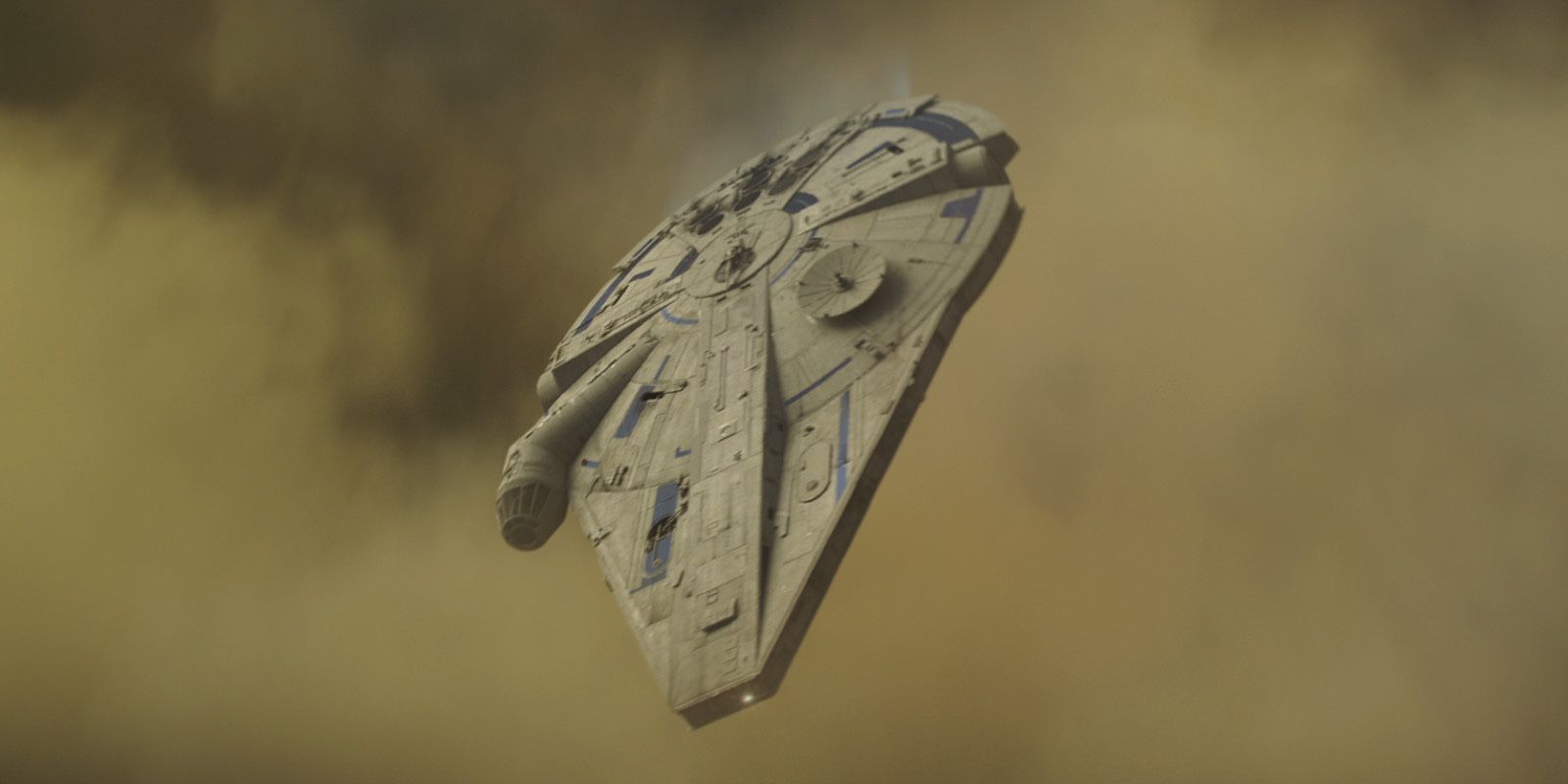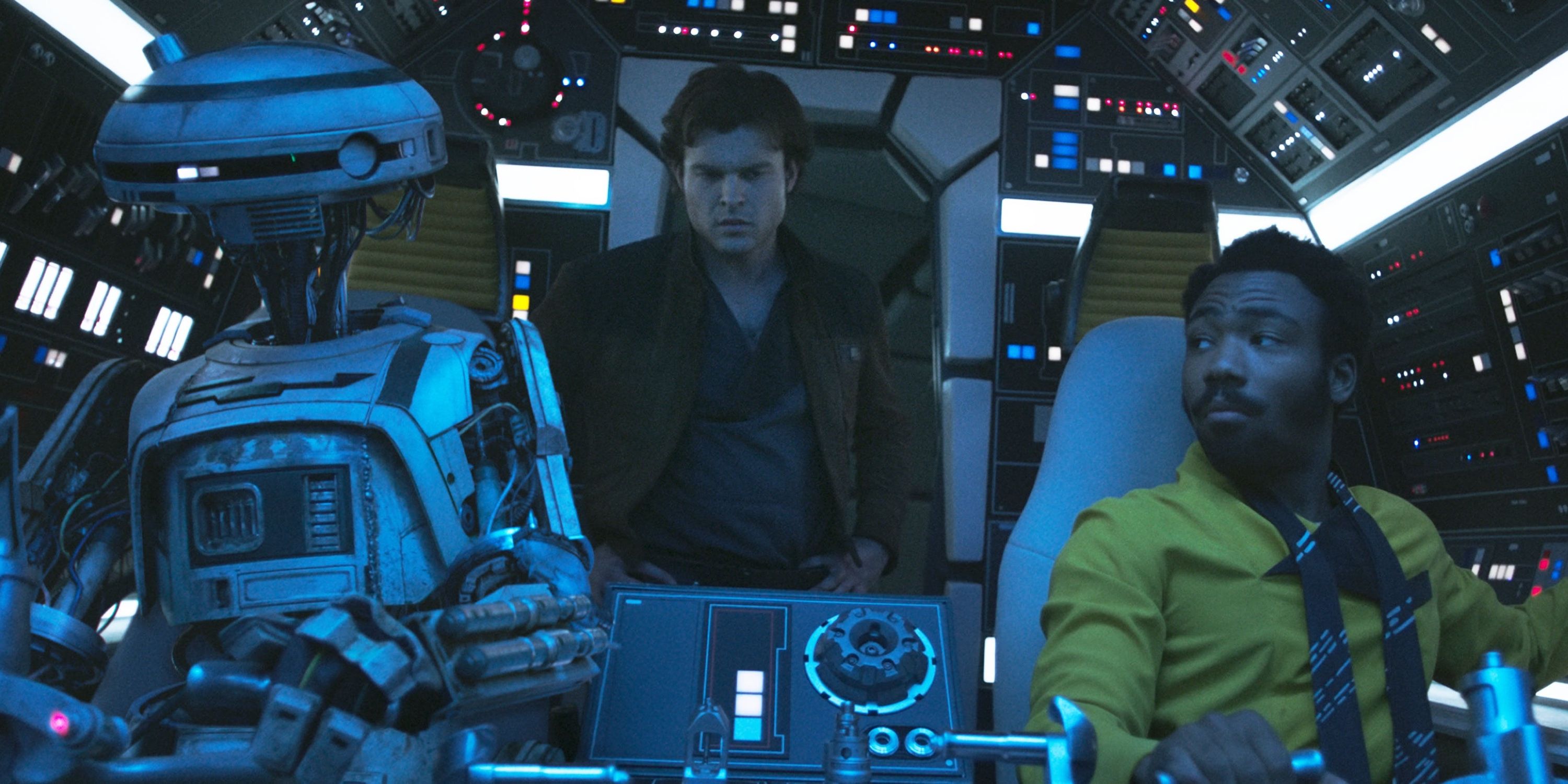
When George Lucas was making the original Star Wars film, he encountered a problem. 20th Century Fox had shut down their visual effects house, so Lucas had to start one on his own from the ground up. He created the company Industrial Light & Magic, and their employees pulled off shots that had never even been attempted at the time. Star Wars won the Oscar for Best Visual Effects, and ILM quickly became a premier establishment in the film industry. They now work on several films annually, always capturing the audiences' imagination with jaw-dropping spectacle.
Following Disney's acquisition of Lucasfilm, ILM has had plenty of opportunities to revisit the galaxy far, far away in recent years. Their latest effort is Solo: A Star Wars Story, which had to pull off the tricky blend of incorporating the wonders of modern technology with the old school techniques of the original trilogy. As Solo hits home media, we had an opportunity to speak with Patrick Tubach, the film's visual effects supervisor.
To start, this movie had a change in directors pretty late in production. So I was wondering what impact that had on your job in post-production and any challenges that presented.
Patrick Tubach: It wasn’t really that much of a speed bump to be honest, I mean, of course it was, but at the same time, Ron [Howard] has a tremendous amount of experience and he’s got some history with Lucasfilm. So, he was really a good and natural fit because of his professionalism and having done so many films in the past, he really came in with a lot of great energy. And I think the biggest thing that I noticed was that his excitement was really contagious. That really transferred, especially to the visual effects part of things because when we’re trying to work through, say, what is the end of the film with the Kessel Run, Ron brought a lot of great ideas and great energy. And when you have a sequence that’s very heavily CG, you need somebody who’s going to help guide you through that because there’s so many possibilities, you need to nail down what’s good for the story and what’s going to be an exciting climax for the audience. That was where I really feel like we honed in on that with him, and it was great to have him on board for that.
What was the biggest difference in the film when Ron came on? I’m talking about story changes or anything like that.
Patrick Tubach: I can’t say specifically, but I think for the whole team, I think he embraced what was there and he just added to that. There was a lot of talk about exactly what that third act was, and I would say because it wasn’t something that had to be shot early on, there was a lot of open-ended possibilities. So in terms of the Kessel Run, how do you go from escaping Kessel to getting to the endpoint where we got to at Savareen, and what is the transformation of the Falcon? I think Ron brought a lot of input into that section as well. We were trying to figure out as the visual effects team, at what point do we damage the Falcon and how do we get it from this pristine, cool-looking new Falcon to Han’s Falcon that we know and love from Episode IV. It was definitely a lot of talk about how that happens, and that was something he brought a lot of input to.

Was there anything cut from the final film you wish had stayed in?
Patrick Tubach: I think there are a lot of cool deleted scenes on the Blu-ray that people can watch. The one thing that was probably hard for me to see go - even though I believe all these cuts get made for a reason to help further the story - but I really liked the battle on Mimban. Specifically, the way that it felt like an old World War I sort of infantry battle, but with Star Wars technology. I thought that was such a really cool idea, and the fact we couldn’t include all of that. There’s a great deleted scene with a character named Korso, who didn’t really make the final cut of the film just because there was a lot of story to tell in that moment and I think the pacing wasn’t quite right. There’s a lot of great detail in that battle. There’s some really cool shots that I wish we could have found a way to make that in, but you can’t keep everything, unfortunately. That whole thing had a really cool aesthetic, and I loved those new AT-ST chicken walkers we made for the film. I would have loved to see more of that.
In the script, the Crimson Dawn leader, who’s ultimately revealed to be Maul went unnamed. He was just “Boss” in the script. Were you aware of any of the other candidates on the list before they decided on Maul?
Patrick Tubach: No, I’m not actually. But, it was interesting being part of something as secret as that, because that was the big secret reveal of the film. And trying to keep that information tight early on was a real challenge and kind of exciting to be part of that early on.
What was your reaction when you heard Maul was coming back?
Patrick Tubach: I couldn’t believe it, to be honest with you. I knew that he had had a life outside in the expanded universe and that story had somewhat continued. I didn’t know that much about it to be honest with you. I thought his story had been finalized in Episode I, so I was as shocked as anyone else to find him part of the script. But I thought it was really cool, you know? In the spinoff movies, we can be exploring some things that you wouldn’t necessarily do in the more canon story of the episodes - you know, 6, 7, 8, 9. I like the fact the spinoff gives us an opportunity to go somewhere we wouldn’t necessarily in those other films.
Building off of that, do you have any ideas where you would like to see the spinoff movies go in the future?
Patrick Tubach: That’s above my pay grade, unfortunately, but I think there are a lot of cool - I mean, I think you can go through a lot of the films and find a lot of cool characters that - Star Wars has this thing where you introduce these really interesting looking aliens or these characters for brief moments, and you’re like, “What is that guy’s story?” And it sounds ridiculous to think - you know, some of the character play such minor roles. But, Star Wars has such a cool universe around it that you feel like there is a thread to follow just about everywhere you look. I feel like there’s a lot of characters we’re introduced to in the classic trilogy that we could know more about. A lot of it is a very small part of a larger story, and it’s kind of thrown away. I think fans would love to know more about a lot of people.

Circling back to visual effects, this is a prequel movie. So, how did the aesthetic of the original trilogy influence the look of Solo?
Patrick Tubach: It was really cool to try and understand how we would fit in the timeline, especially when it came to vehicle design. We were working with the Episode IV look, but we knew we were in between timelines in terms of Episode III and IV. So, we’re trying to think, is there room in there to fit another iteration of a particular vehicle, or is that iteration going to be very slight? And in the case of the TIE fighters, we did have a new TIE fighter introduced - the larger, gunship TIE fighter. We always kind of made up a story around that, which was, they’ve had this gunship TIE fighter, but it was really big and bulky, and it didn’t seem like something that really would survive. You would try it out as a prototype and you’d go, “This thing is too big and isn’t practical,” and they kind of abandoned it in Episodes IV and V. So it’s fun to think about those iterative, small changes that you can make to existing vehicles and find ways to make them look like they’re still part of the timeline of the history of design of, say, TIE fighters or star destroyers, for instance.
Was it tough to keep the look of the original trilogy consistent, using the modern filmmaking equipment and technology?
Patrick Tubach: Luckily, we’ve gotten to the point of rendering and lighting where we can make photorealistic, looking physical things. But I’ll tell you one thing that we do spend a lot of time thinking about: the fact that we’re hooking up with films that were originally shot with miniatures. And when we look at those classic films, people can point out flaws that those particular techniques may have had, but at the same time, those look like real, physical objects. We spend a lot time thinking, OK, we’re starting out in CG, but we need to harken back to the way these miniatures looked, without being ridiculous. We don’t want to make ships look “miniature,” but at the same time, we want them to feel physical. And I think we spent a lot time examining how those old ships looked because we want people to feel like they’re looking at a real physical object. I think that’s a challenge CG has nowadays in terms of not feeling like a completely computer generated effect, but feeling like something you can imagine could be flown like a miniature or shot like a miniature.
Are there any obscure Easter eggs fans should look for next time they watch the film?
Patrick Tubach: Let’s see… obscure Easter eggs…
Yeah, something you guys hid in there.
Patrick Tubach: [Laughs] Well, I don’t know how much people have talked about it, or how much it’s been noticed, but there is a character - I believe his official name is Quay - who’s on the Kessel planet who comes out to greet Qi’ra and Han and Chewie as they make their attempt to get inside the facility. And Quay is the one who takes them in and shows her into the control room and then she does her ninja moves on him. And Ron had wanted us to add this dripping, kind of mucusy-looking stuff coming from his nostrils, which we did, just to make him a little bit more gross and we would also be able to tell when he was speaking. We actually used sort of a misting sort of thing coming out of his tubes. One of the fun moments is when she finally takes him out, she smashes his face against the glass and we sprayed the glass with the goo that comes out of his nostrils, which was one of those things we threw in there just for fun. Ron has this instant reaction when he sees things he likes, where he goes, “Oh, that’s awesome! I love it!” That was a cool moment for us to throw something in there like that and have him have an enthusiastic response to it, and it’s in the movie. It wasn’t really something that was asked for, but we wanted to add that extra little bit of fun.

What’s the biggest difference doing motion-capture on a character like L3 compared to Snoke in The Force Awakens?
Patrick Tubach: The biggest thing is, really, in terms of motion-capture, it really wasn’t motion capture. It was more that we were matching-moving her body after the fact. In the case of Snoke, we took Andy Serkis, we had tracking markers on him, we had a facial and head cam on him, we tracked his body movements. And that was the way that was originally designed. With L3, it was more a case where we designed a costume for Phoebe [Waller-Bridge] to wear, and then we used those costume pieces in order to track. So, it’s a similar idea, but really, I think we’re a little more reliant on the physical performance of Phoebe. And we had more freedom to manipulate and change a little bit on Snoke’s performance. With L3, it was a bit more true to form in terms of really staying with her one-to-one performance of the character. It worked out great because she brought such a physical characteristic and really something that we probably wouldn’t - there’s aspects to the way she acted with L3 that we wouldn’t have thought of in animation, which was fantastic.
Thank you.
Patrick Tubach: Thank you.
More: Every Deleted Scene In Solo: A Star Wars Story
Solo: A Star Wars Story is now available on Blu-ray and digital.
from ScreenRant - Feed https://ift.tt/2xDWvai

0 Comments